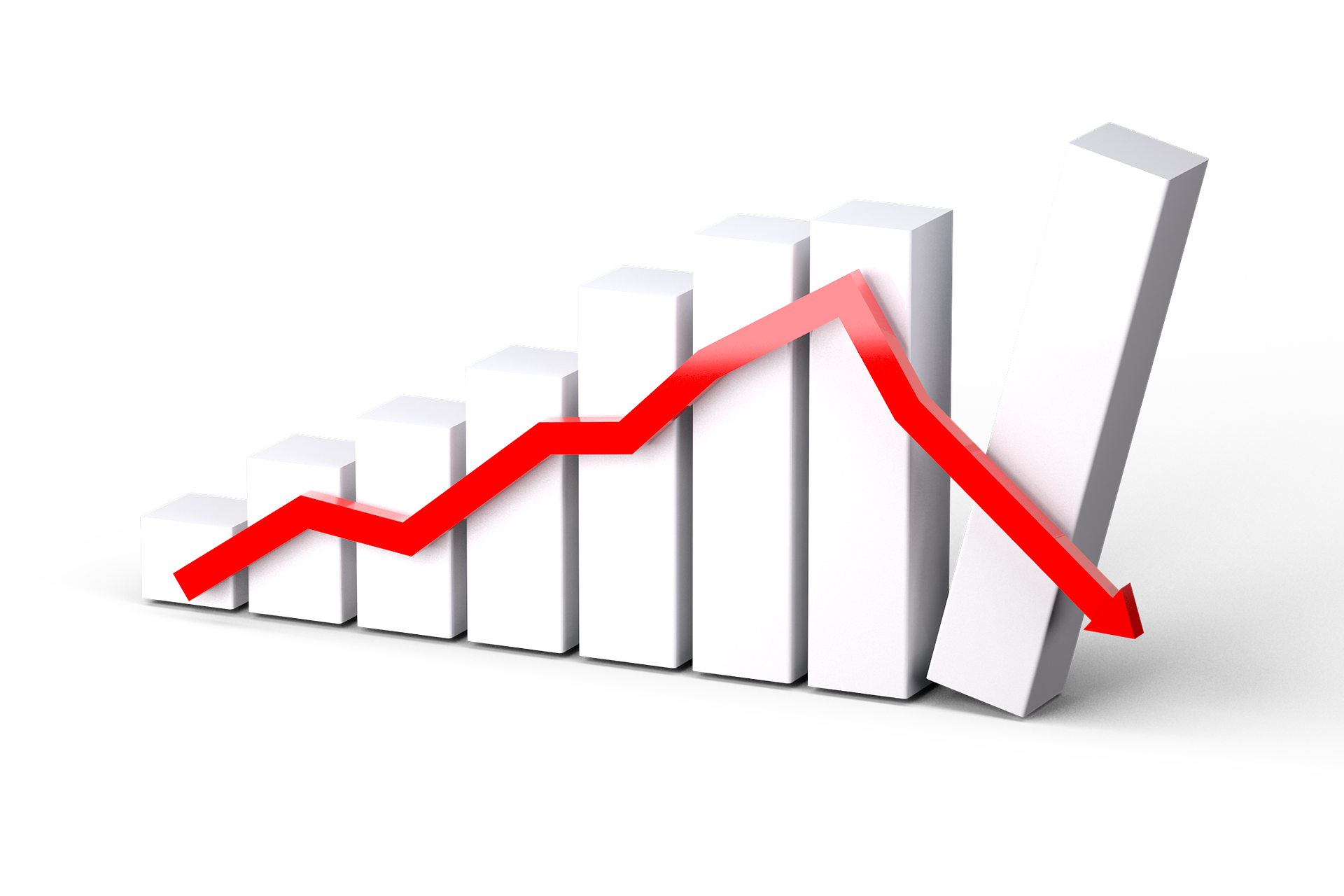For many, the word “recession” indicates terrible times for the economy. It is a period where the economy shrinks or stagnates for an extended period, usually two or more consecutive quarters.
When a recession happens, it becomes more challenging to trade and invest in assets because of the fall in value and increased risk. Yet, falling prices during a recession can provide good opportunities to invest in high-quality assets for cheap and continue to thrive.
Here’s what investors and traders need to know to take advantage of a recession.

What to Know About Investing and Trading During a Recession
If you invest well during the lowest point of an economy, you could experience significant gains over time as prices begin to rise and the economy stabilises. However, every action counts because of the increased risks in trading and investing. So, before you trade or invest in a recession, it is crucial to have this in mind:
Use the dollar-cost averaging strategy (DCA)There is no perfect time to invest when the economy is in a downfall, and the best thing to do is to look for ways to minimize the risks involved as much as possible. This makes the dollar-cost averaging strategy one of the most efficient to use for success during a recession. Plus, it is an effective stock trading method for beginners who want to build a solid foundation.
This strategy is designed to manage price risk when investing in assets like stocks, mutual funds, or exchange-traded funds (ETFs). Instead of investing a certain amount in an asset at once, this method requires you to break down the amount and invest in small quantities at regular intervals.
If the price ends up dropping after investing, this reduces the losses suffered and gives you time to decide if you want to keep investing or pull out of the security. Of course, prices don’t always move as expected, even in a recession but doing this maximises your chance of paying a lower average price.
Dollar-cost averaging vs Market Timing Dollar-cost averaging and market timing are two different trading strategies that are often confused with each other.
As its name suggests, market timing involves an attempt to time the market and buy securities when their prices appear to have dropped. This sounds like a smart move to make, but it is difficult in practice because no one can accurately predict how the market will move over a short period. If you end up trying to time your purchase, it is possible to end up with fewer gains than you would have made.
Dollar-cost averaging, on the other hand, requires you to invest at a set time. For instance, if you have $1000 to invest in a stock, you could spread it over 10 months, breaking it down to $100 per month. It takes emotions out of trading, and you can gain as the price fluctuates.
1. Avoid panic selling
Emotions tend to be high when the price of an asset falls, but it becomes heightened when the economy is already in a downfall. Wanting to avoid loss is part of human nature, and it is tempting to want to exit the market and wait for more attractive entry points to show up.
Panic selling increases the losses your portfolio faces because you are exiting when the market is at its lowest point. It also increases the possibility of missing out on sharp, unexpected rebounds that could completely make up for the previous losses. In addition, panic selling leads to panic buying as you attempt to enter the market again and make up for lost ground.
Both investing and trading are never done with utmost certainty, and to stop yourself from panic selling, you can:
Remain disciplined by following your investment plan.
Consider improving your skills and using market sentiment indicators. For instance, learning to use the level 2 market data for trading dramatically increases your chances of success when trading during a recession.
Have a good idea of what the bigger picture looks like. Get information on what inflation and earnings look like.

2. Don’t purchase cyclical stocks
These stocks are tied to consumer confidence and employment. For instance, companies that produce high-end cars, clothing, furniture, or other non-essential items. Cyclical stocks perform very well when the economy is good and stable because consumers tend to spend more during those times. For example, where the economy is strong, people are more likely to splurge on eating at expensive restaurants, going to hotels, or buying high-end luxury clothes. But in a recession, it becomes the opposite.
When the economy enters a recession, consumers are more careful with their spending, causing the price of cyclical stocks to drop. If the recession is prolonged and severe, cyclical stocks could become almost useless, and the companies could go bankrupt. Although investors and traders should be wary of cyclical stocks in their portfolios during a downtrend, it is not necessary to avoid it altogether.
It can be included in a portfolio for long-term growth with managed volatility, especially if the company has enough capital to withstand going bankrupt. In this case, the price of the cyclical stock is bound to rise again as the economy recovers and makes you some profit.
How to Trade and Invest During a Recession
During a recession, traders and investors tend to get defensive and pull their funds out of the market to protect them from losses. One thing to remember before trading is that you shouldn’t rely on optimism alone but have a game plan and the right mindset. Traders that want to remain active in the market, can do the following:
1. Trade stable companies
A good investment strategy during a recession is to invest in companies with strong balance sheets and steady business models.
Also, look for companies with a track record of paying dividends because having a stable cash flow can be a huge advantage to your portfolio.
If you are finding it difficult to search out individual stable dividend-paying companies, another option is to invest in ETFs that comprise dividend-paying companies. Although these dividends can be withdrawn whenever you need them, one major advantage of dividend-paying stocks is that the dividends can be reinvested.
Where the price of the asset drops, you won’t feel its impact if the dividends are reinvested. When searching for dividend-paying stocks or ETFs, keep an eye out for consistency or increasing dividends rather than high yield. High yield often comes with increased risks you would want to avoid in a recession.
2. Focus on defensive stocks
Also called non-cyclical stocks, defensive stocks tend to do well regardless of the current state of the economy. During a recession, investors move to defensive stocks to protect their portfolios. Most stocks that fall under this category also tend to be dividend-paying stocks.
Defensive stocks are typically from sectors that produce consumer staples or necessities. Consumers will have to purchase these goods regardless of the state of the economy, and they rarely experience sudden jumps in price.
Other examples of defensive stocks are companies that sell utilities and essential household items like groceries. In addition, defensive stocks are a great option for risk-averse investors or those who don’t know a lot about investing.

3. Invest in Commodities
Commodities have historically performed well in recession and can be a safe haven for investors. Commodities fall under 2 categories: soft commodities and hard commodities.
Soft commodities, like agricultural products and livestock, have a perishable nature. As a result, the value of soft commodities tends to decline, creating opportunities for short selling. Hard commodities refer to energy products and minerals that can be stored for a long time. For instance, investing in a hard commodity like gold is a good way to store your money and make a profit. These commodities tend to hold their value better during a recession, and these prices mostly remain stable once the economy recovers.
Conclusion
Investors and traders have been known to make money in a recession depending on their trading strategy and skill. While the economy is in a downtrend, trading can be risky, how you invest and what you invest in becomes much more important.
It is advisable to avoid speculation when trading or investing during a recession since the value of assets is dropping. Investing in the wrong company can wipe out your portfolio, and taking your time before investing in an asset ensures that your portfolio remains safe, especially when the economy starts to recover.























